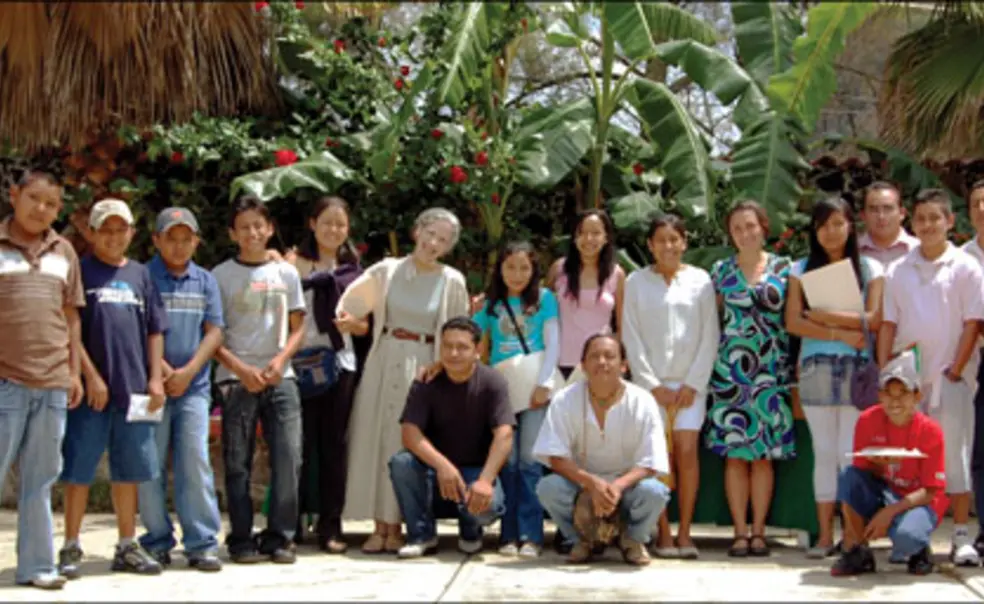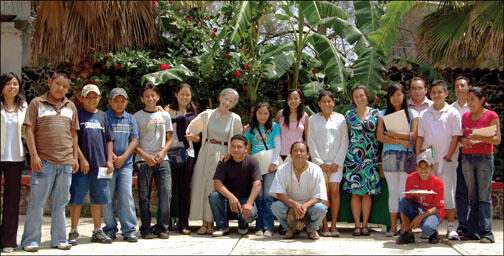A moment with ... Ellen Calmus *84, advocate for migrants' families
In the United States, public attention to Mexican migration focuses on its effects in this country. The Corner Project, a non-profit community-based organization (elrincon.org) led by Ellen Calmus *84, focuses on migration issues on the other side of the border. Based in Malinalco, Mexico, a historically Aztec region southwest of Mexico City, the Corner Project grew out of a chil dren’s educational program that Calmus founded when she moved to the region in 1998. She spoke last month about the group’s work and how American border policies could be improved.
What does the Corner Project do?
We run a summer program to help keep migrants’ children in school, and we work to create jobs in this area. But much of our work is responding to crisis needs. We do things such as help people in Malinalco locate their relatives who have migrated to the United States. That migrant may be in jail or in the hospital or in trouble, and we work with the Mexican consulate to help their families find them. We might also help someone whose migrant relative has died while in the United States, and they want to bring the body back for burial.
By using our Internet phone, which allows unlimited calls to the United States, and our contacts within the local community, we have a very high rate of success in finding people. It’s amazing how much that can solve. Suppose someone is in trouble up there. We can bring his mother or wife to the phone. We can get word back so their family knows that the migrant is OK. Migrants might look to Americans like they’re on their own, but each one has an extended community, and that community can help solve problems.
Why do Mexican people migrate to the United States?
Usually when someone leaves a place like Malinalco, which is new to migration, it is because of a catastrophe —the breadwinner has died, for example, and the surviving family can’t make enough to support themselves, or a child is sick and needs expensive medical treatment. People go north hoping to earn enough to meet those specific needs, but they want to come back. They’re not looking to move
to the United States. This is what I call early-stage migration, when people head across the border from a place that doesn’t have a long tradition of it. Journalists tend to focus on places with established migration patterns, where people cross the border because they already have relatives and a community in place that will help them find work. Our people tend to go to areas where there is hardly anyone from their area, so they are quite vulnerable. They have no support system.
You have been critical of American border policy. Why?
Current policy traps people up north. It used to be that people would go up, stay for a year or two, and come back to visit families. They could come home for a funeral or to visit their children, then return to a job in the U.S. to finish earning enough to pay the debt they owed for crossing and bring home enough to, say, finish building their house. But now it’s so dangerous and expensive to cross the border that people who already are in the United States know that if they leave, they won’t be able to get back. If they haven’t earned enough to repay their border-crossing debt, their family could lose their land, so they can’t risk it. What was not intended to be a permanent stay can become one if a migrant can’t return to deal with a family crisis, and the family breaks down.
Why should Americans care about Mexican migrants?
Typically, people in the United States are very polarized on the border issue. Some see it as a humanitarian problem, and others see it as a security problem. The solutions we’re working on address both. We had a minor being held in an adult facility once, and I was on the phone to the head of the U.S. jail, trying to get the boy transferred to a juvenile facility. The officer started yelling at me, saying that if I cared so much for these people, why didn’t I get jobs for them down in Mexico? I said, “We’re working on it,” and showed him the program on our website. He ended up working with us so that the boy would be released and delivered to a relative — he’d be sent home rather than deported. Later I ran into the boy’s mother buying groceries, looking very happy. She told me he’d earned enough to fix their roof and would be home in time for Easter.
— Interview conducted and condensed by Mark F. Bernstein ’83













No responses yet